“Hellraiser” is an oddball among horror franchises, starting with idiosyncratic gore-horror from the writings of Clive Barker, ranging into straight-to-video films where Pinhead (Doug Bradley in eight of the 11 entries) is an afterthought, and culminating in a mainstream (but very good) remake.
And my list will be odd, too, as I’m not a big gore-horror fan (although I do appreciate the groundbreaking practical-effects artistry of the original trilogy), and I don’t dismiss the movies where Pinhead is a background character as quickly as some fans do.
As Pinhead would say, “We have such sights to show you” if you embark on the dark journey through the 11 “Hellraiser” films. So let’s open the Puzzle Box to unleash my rankings, from painful to pleasurable. (Click on each title for a full review.)
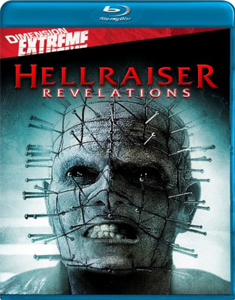
11. “Hellraiser: Revelations” (2011)
This is at the bottom of most “Hellraiser” rankings, and while it’s tempting to be a hipster contrarian, I can’t argue with the consensus. The ninth entry was never intended to be good – Dimension Films cranked it out on a low budget for the sake of retaining the license. Director Victor Garcia does yeoman’s work given the constraints, getting passable performances in an uneven mashup of “found footage” and one-room theatrical staging. Stephan Smith Collins becomes the answer to a trivia question as the first non-Bradley Pinhead, but even Bradley couldn’t have saved this cheap rehash of the original story.

10. “Hellraiser: Judgment” (2018)
If this list went in order of gross-out factor, the saga’s 10th film would rank No. 1. Writer-director Gary J. Tunnicliffe, a veteran of the series’ special effects crew, goes to nightmarish corners of his brain to dream up disgusting uses of bodily fluids. The rundown buildings match the events in grossness; let’s just say this isn’t a good tourism video for Oklahoma City. Conceptually, “Judgment” gets closer to the original trilogy than many of the sequels, expanding the Hell (and also Heaven?) mythology, as Pinhead (Paul T. Taylor) suddenly has many colleagues. A serial-killer procedural with depressive detectives provides the plot, but the film lacks the can’t-turn-away intrigue of something like “Seven.” I would’ve turned away if I wasn’t watching every film for the sake of being a completist.
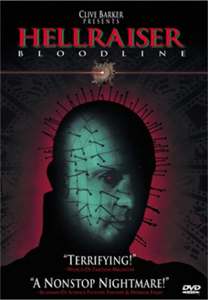
9. “Hellraiser: Bloodline” (1996)
The fourth entry leaves Barker behind, but returning writer Peter Atkins is still plugged into the mythology, following the Puzzle Box through past, present and future of the LeMarchand lineage. The ambition outstrips the execution, though, with space-station special effects hovering around SyFy Channel quality. One year later, “Event Horizon” – which had “Hellraiser” connections very early in its development – would do “Hell in space” vastly better. This film has its defenders – although director Kevin Yagher isn’t one of them (he opted for an Alan Smithee credit) – and rumors of a better cut persist. For now, though, I have to judge “Bloodline” as it stands.


8. “Hellraiser: Hellworld” (2005)
Again, the concept is interesting at first glance: What if people knew “Hellraiser” as a fictional gaming franchise, but the game designer got his idea from the real existence of Pinhead and the Cenobites? And everyone finds out this is no game in horrific fashion? Well, there’s a core problem with this eighth entry (and third from blue-collar director Rick Bota): Pinhead wouldn’t shrug off the idea of a game designer trivializing him. “Hellworld” ends up going to a different story place (although the core logic hole remains). But thanks to the mansion-based party, it does flirt with mainstream post-“Scream” appeal, and it utilizes good actors ranging from veteran Lance Henriksen to a pre-Superman Henry Cavill.
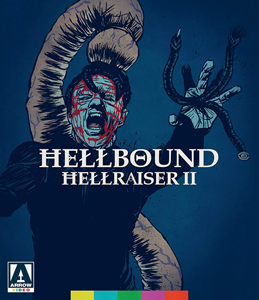
7. “Hellbound: Hellraiser II” (1988)
Director Tony Randel’s quickly turned-around sequel is a feast for fans who are really into the practical and composited effects and Cenobite mythology. Slower-paced and less suspenseful than the original, “Hellbound” at least keeps Ashley Laurence’s Kirsty as a main character. Unfortunately, she spends a boringly long amount of time being thought to be crazy. Co-heroine Tiffany (Imogen Boorman) is a nice inclusion for autistic representation, but ultimately she is overshadowed by confusing lore. The film ultimately gets so big – when it goes into a giant maze of a Puzzle Box, established with a matte painting – that the character beats are overwhelmed.
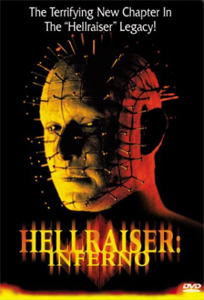
6. “Hellrasier: Inferno” (2000)
The fifth entry marks the point at which the saga abandons Barker’s work and instead tacks Pinhead onto dark serial-killer-investigation yarns that wouldn’t otherwise be “Hellraiser” films. This one has some cachet, as it’s a calling card for director Scott Derrickson, now a respected horror auteur. The grungy hardboiled trappings are present – and effectively played out by Craig Sheffer as the not-so-shiny police detective. The tropes might feel too played out for some viewers, but there’s enough style here to make “Inferno” (which, admittedly, has nothing to do with fire) accessible for a casual “Hellraiser” follower.
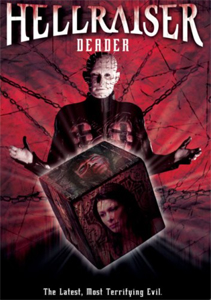
5. “Hellraiser: Deader” (2005)
The seventh entry – and first of director Bota’s back-to-back shoots in Romania – gets grungy production value out of rundown buildings. And while some might scoff at MTV News’ Kari Wuhrer as a tough-as-nails, world-hopping investigative reporter, she’s perfectly serviceable, and more likable than the corrupt cops elsewhere in the saga. As we explore a cult of Deaders – drug-using pleasure-seekers who go so far into darkness that life, death and purgatory are hard to tell apart – Bota achieves a surrealness that stuck with me after the credits. In terms of the overall mythology, we’re simply reminded that Pinhead doesn’t like competition, so “Deader” isn’t an important entry, but it’s a solid one.
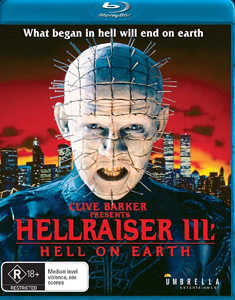
4. “Hellraiser III: Hell on Earth” (1992)
After the bloated second film, “Hell on Earth” lives up to its title by returning to recognizable urban haunts. While writer Atkins and director Anthony Hickox juggle too many themes (including Pinhead’s human backstory as an Army soldier), the three-quel appealingly packages early Nineties clubbing and big-city violence into a Puzzle Box … erm, time capsule. While it’s a shame that Laurence is relegated to a cameo, the friendship between two women (Terry Farrell and Paula Marshall) provides a core slice of humanity amid poor schmoes getting sliced up by Pinhead and company. The practical effects team goes nuts with the Cenobites, including one who slings CDs like deadly discs. Whether that’s a feature or a bug, the movie as a whole is quite a romp.
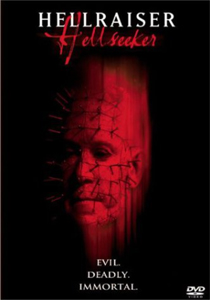
3. “Hellraiser: Hellseeker” (2002)
The sixth film – and Bota’s first of three – is my controversial pick as the best of the serial-killer mysteries that only use Pinhead as a spice. Playing out a script by Carl V. Dupré and Tim Day, Dean Winters (the Allstate “Mayhem” guy) strikes a balance wherein his amnesiac Trevor is a sympathetic audience surrogate yet also a wild card who might truly be a killer. Similar questions swirl around Trevor’s wife Kirsty (Laurence’s last turn in the role), who makes the final act connect with the core lore. Helped by Steve Edwards delivering one of the saga’s best scores, “Hellseeker” is a surreal moral puzzle more so than a straightforward mystery. It threads the needle in appealing to casual “Hellraiser” followers but also catching up with Kristy.
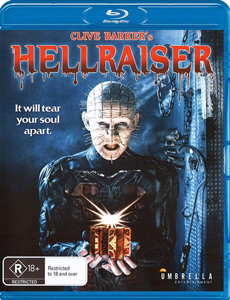
2. “Hellraiser” (1987)
Coming directly from the mind of Barker – who directs and writes the screenplay from his own short story – the original “Hellraiser” burst onto an Eighties horror scene dominated by weak slasher sequels. With its self-disfiguring Cenobites, Hell mythology, and talk about the thin line between pain and pleasure, this film invigorated the genre but was also destined to stay at cult level because many teens didn’t dare rent it (or weren’t allowed to). Bob Keen’s amazingly disgusting practical effects of regenerating deceased womanizer Frank (Sean Chapman) stand toe-to-toe with the likes of “The Thing.” It almost makes up for the unlikable characters and confusing (at first blush) explanations of the mythology. “Hellraiser” wisely borrows slasher films’ Final Girl trope – in the form of Kirsty, stepdaughter of the evildoing Julia (Clare Higgins) – to keep us engaged.
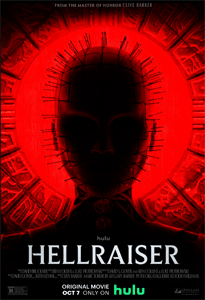
1. “Hellraiser” (2022)
The “Hellraiser” saga had always been fringy even among horror fans, but director David Bruckner’s reboot (it’s unclear if it’s an in-universe reboot with a second Pinhead, played by Jamie Clayton, or a new timeline) is an appealingly mainstream exercise. But it includes staples such as the disfigured Cenobites, and should please Barker-ites. Writers Ben Collins and Luke Piotrowski simultaneously build a mystery around the Puzzle Box – acquired by likable mop-haired street urchin Riley (Odessa A’zion) – while making the rules clearer. “H22” includes the heavy emphasis on style seen in the serial-killer entries, but it’s much more tied to Barker’s mythology. Amid a constantly rainy city that always sleeps (unnamed, but shot in Bosnia), both the poor young people and the rich Voight (Goran Visnjic) investigate the box’s limits. For the first time in a while in this saga, the endpoint is both unknown and something we desire to know.
Click here to visit our Horror Zone.
Fire image by 947051 via Pixabay.

